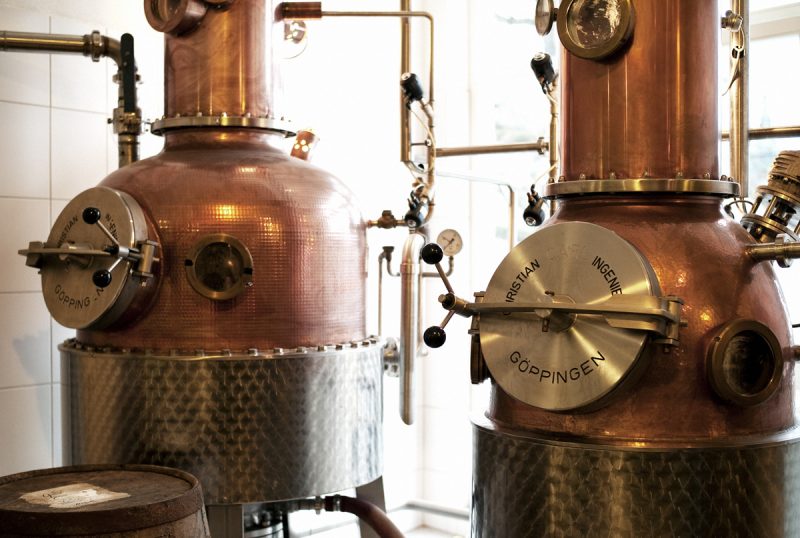
11 Aug Ferdinand’s Gin Distillery
The Saar River runs in western Germany, close to the border with France, and is home to one of the most highly regarded white wine regions in the world. It is also home to Andreas Vallendar, distiller at their family estate that was founded in 1824 in Willingen, and Dorothee Zilliken, a young and award-winning winemaker at Forstmeister Geltz-Zilliken. It was a small company called Capulet Montague who saw the potential in combining the knowledge, history and craftsmanship of these two artisans in the creation of a new gin: Ferdinand’s Saar Dry Gin. This brand is named after the founder of the VDP Mose-Saar-Ruwer group, Ferdinand Geltz. Tekst: Albert van Beeck Calkoen Beeld: Kiki Kouthoofd

Single Estate
The first step was to determine the set of botanicals that would be used for the gin. Many plants, herbs, berries and trees grow in this area, which has a unique microclimate that is responsible for the quality of the grapes that are turned into Riesling. The local nature has been a great source of inspiration for Ferdinand’s with botanicals such as lavender, sloe berries, hops, rosehip, lemon thyme, rose, quince and angelica. This is complemented by more exotic botanicals such as ginger, almond shell and, of course, juniper. Before these botanicals are brought to the distillery, they are all macerated in alcohol for 5 to 7 days. 30 botanicals in total are distilled at once in a double distilled neutral spirit consisting of grain, barley and rye. Fun fact: these crops are grown by themselves, which is also quite unique! Some delicate botanicals are distilled fresh in a carterhead, which means that they are infused by means of vapour. This is especially good for rose petals, lavender and lemon peels. The latter gets a special scent, which is more towards bitter orange.
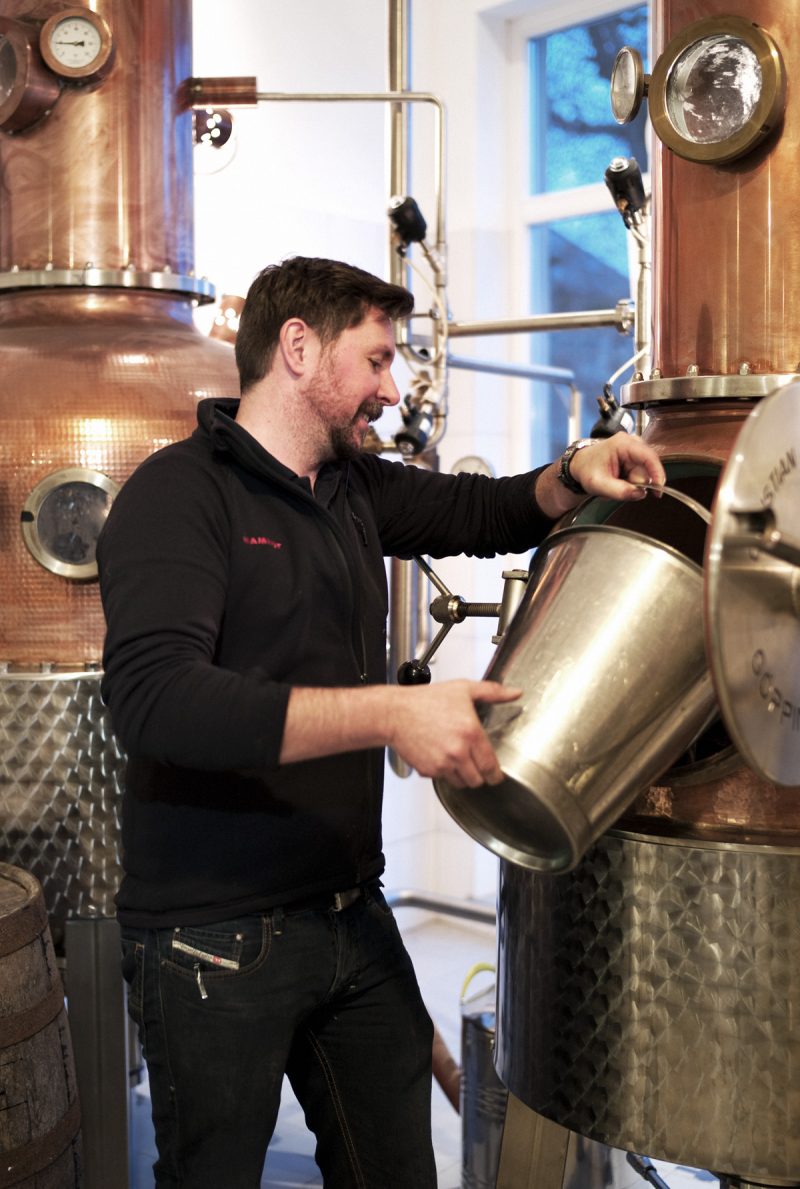
Distilling marrying
The stills and the distillation method were designed by Vallendar himself and built by Carl, one of the most famous copper still builders who has been helping to improve the distilling world since 1869. At first they made whisky and fruit liqueurs here. Later they also focused on gin, but because they are a really small family distillery, they currently only make whisky and gin. The two stills have a capacity of 200 and 500 litres which are used for maceration and distillation.
After distillation, which is no higher than 70% abv, the gin is blended with Riesling and water to 44% alcohol. The exact proportions are not disclosed for obvious reasons. The product is now ready, but needs a little time to get to know each other, known as “marriage” in the drinks world. This takes place in stone vats for at least 4 weeks. During this time, the elements form the final product and the wine gets a little oxidation, which benefits the flavour. The team behind Ferdinand’s have not only developed the gin, they have also created a Quince gin, which is much sweeter, and a Distiller’s Cut that is released once a year with extra botanicals such as dried Riesling grapes, vanilla and cocoa. On top of that, they have created a range of bitters to accompany the gin tonics, created their own Riesling vermouth and have their own tonic water, Doctor Polidori’s.
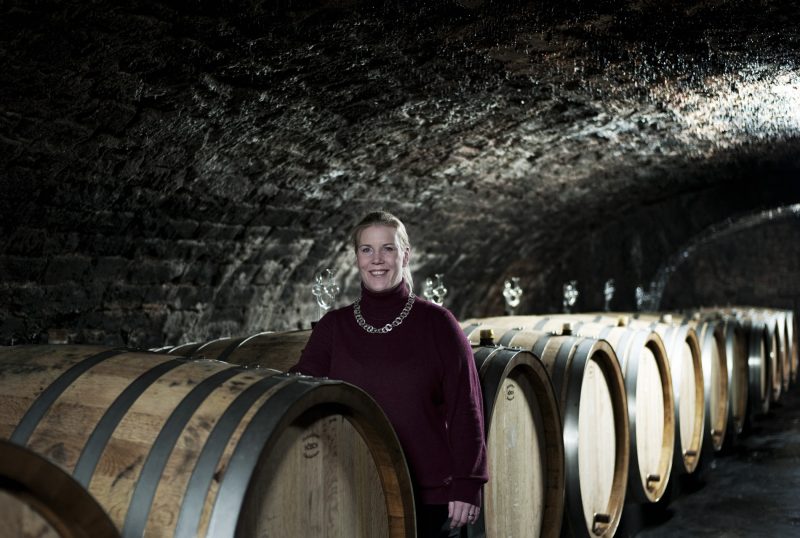
Dorothee Zilliken between the new barrels. These will last for about eighty years. Photo credits: Kiki Kouthoofd
Zilliken
The wine comes from Zilliken, as mentioned, where Dorothee continues the family business as an 11th generation winemaker. In the cellars of their Weingut, the grape juice is fermented in large wooden barrels in a very traditional way. Here the temperature is a constant 10 degrees, while yeast needs a temperature of between 15 and 25 degrees to work optimally. This means that complete fermentation can never take place and that residual sugars remain in the wine. This makes it sweeter and fruity. The wine is divided into different categories based on the quality of the must and has beautiful names such as ausläse, kabinett and spätlese. The name spätlese refers, as the amateur Germanologist had already guessed, to a late harvest. The grapes have then ripened longer. Sometimes it happens that the grape starts to rot on the vine. This is called botrytis, where the mold causes the grape to burst open. The moisture then flows out, but the sugars remain. This is also called noble rot. If the winegrower can let the grapes hang until a heavy night frost has passed over the land, then an Eiswein can be made, very rare these days and therefore also very expensive. The risk of letting the grapes hang too long is after all great.
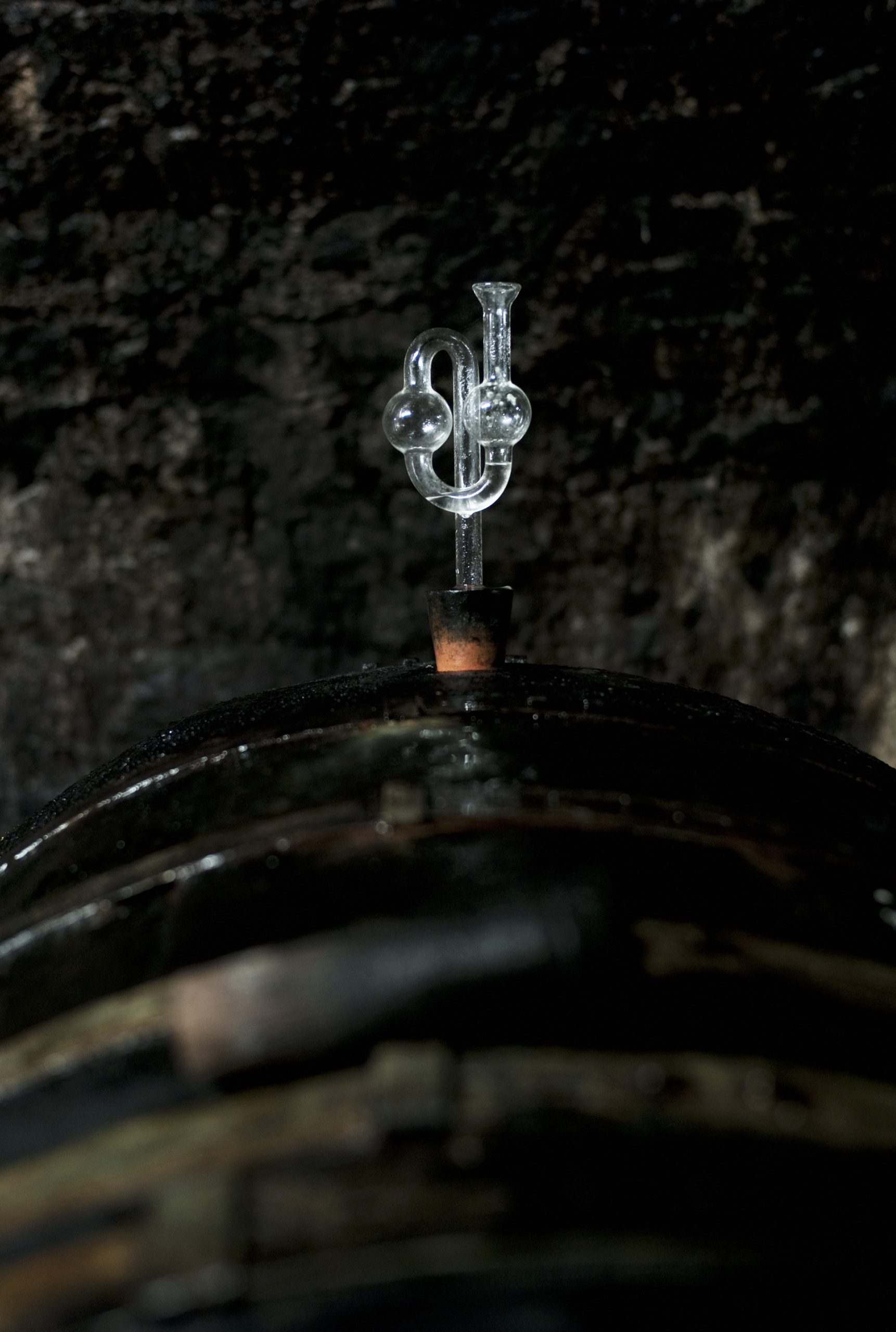
Photocredits: Kiki Kouthoofd
The cellars of Zilliken are impressive. Not so much because of their age: the original wine cellars were hit by a bomb in the Second World War. It is the impressive collection of bottles from all the vintages since 1948 that are stored here. Often the corks are covered in mold, but these are really the best wines from Germany. At the time I visited, Zilliken had just become Gauld Millau Winemaker of the Year and three of their wines had been named best wine in Germany. And this wine goes into Ferdinand’s Saar Dry Gin. The Spätlese to be precise. And up to 25% of the harvest is used for the production each year. For their Quince Gin, the Kabinett is used and for the Goldcap Vermouth, the Vintage ’99 is currently used, making it the only Grand Cru Vermouth in the world. To put it into perspective: a bottle of the Vintage ’99, if you can still find it, goes for around €200. Because one thing is clear by now: at Ferdinand’s, only the best is good enough!
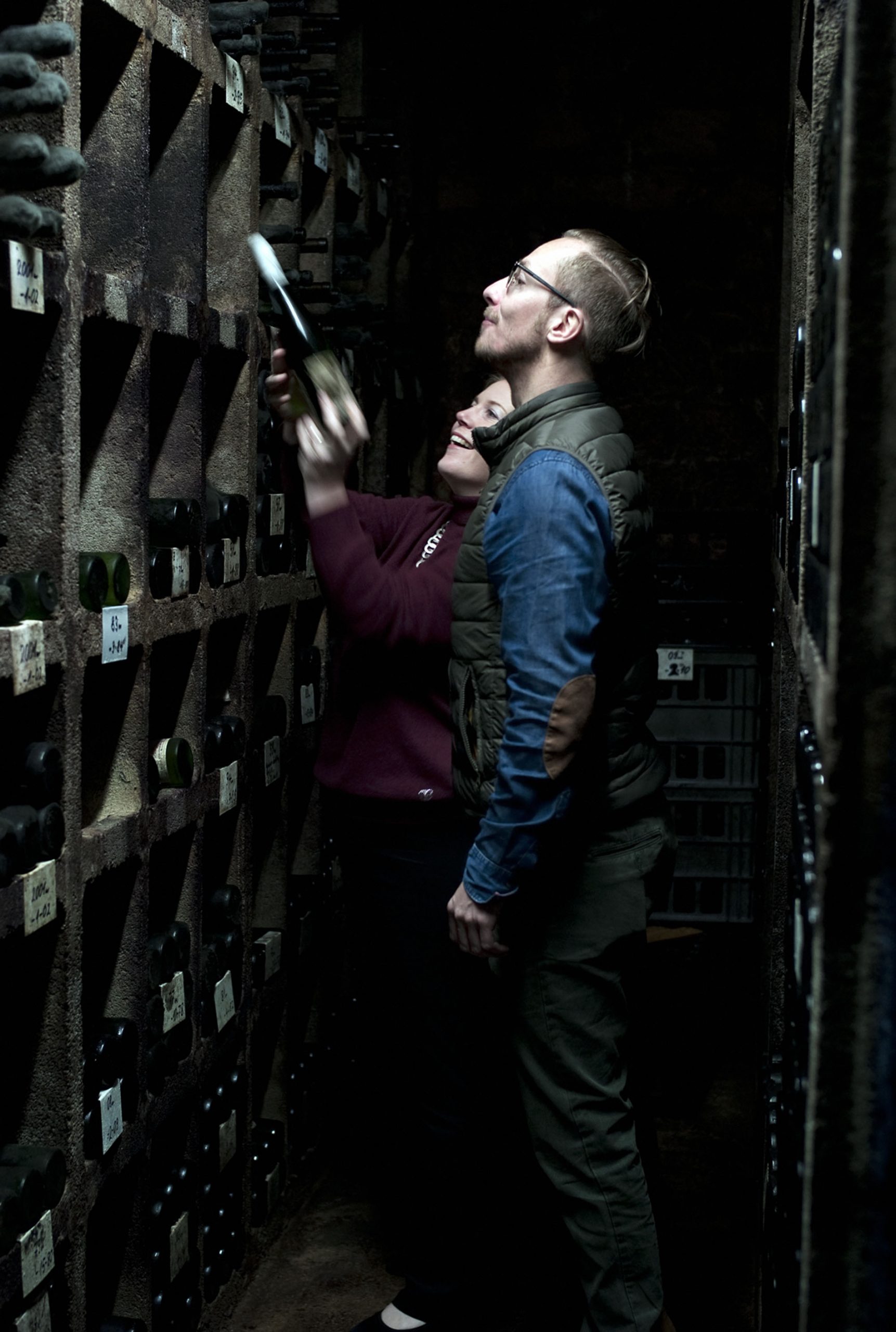
Denis Reinhard en Dorothee Zilliken in the cellars of their Weingut. Fotocredits: Kiki Kouthoofd



No Comments